Poems of Friedrich Hölderlin
Translator's Blog — Page Five
Dimidium Vitae
I was delighted to chance upon a Latin make-over of Hölderlin's Half of Life poem created by the learned and versatile Timothy Adès, translator illustris ac doctissimus from England, who permits me to post it herewith:
Dimidium Vitae
flava pirus, rosa silvarum: defertur onusta
terra superficie lapsa lacustris aquae.
suaviolis olor ebrius it: fas dedere collum:
sobrius in sacrum dat caput ire lacum.
e nive qua capiam flores, vim solis, et umbram?
signa aquilone sonant; moenia muta rigent.
More wonders from Timothy may be examined at https://www.timothyades.com/.
— 9/1/2022
Visitor Stats and Creative Commons Release
This site has now been online for about two years, and Google Analytics affirms that it currently averages around 350-400 clicks per month. Almost all countries in the world have checked in—we're still waiting patiently for Greenland and Kazakhstan. About half the visits are from the United States, while the U.K. and Germany together make up an additional twenty-five percent. About half the visitors have used smart phones, though the site is designed preferentially for laptop-sized screens.
I've made the materials available on a Creative Commons CC BY-SA 3.0 license, meaning that anyone may use the translations for any purpose as long as the translator is credited—so as to avoid confusion with other translators. I continue to make revisions and add material, making the online version more up-to-date than the most recent paperback edition available on Amazon and Small Press Distribution in Berkeley. I also plan to add more translations from the Late Hymns before the end of the year.
— 8/25/2022
Mutant Monuments
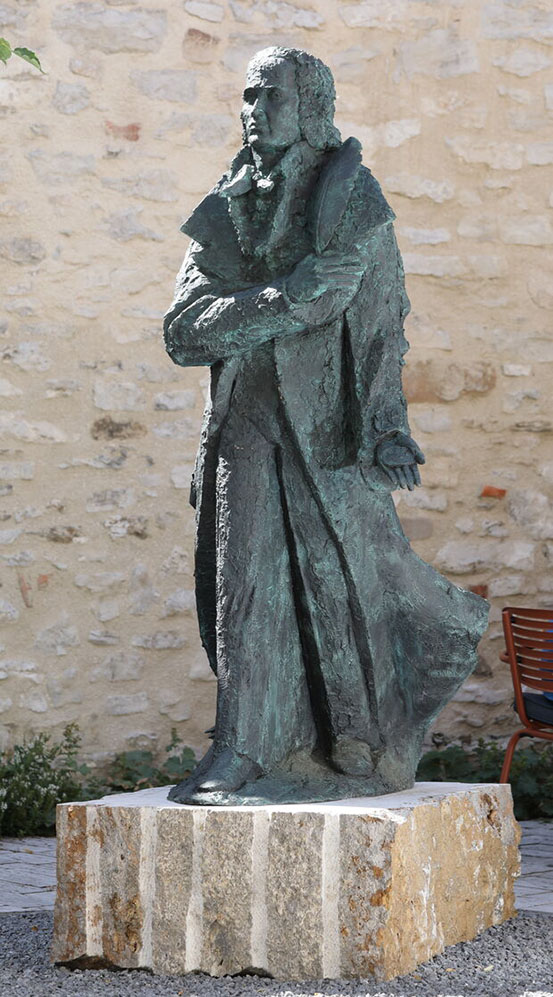
Photo: Rolf Bodmer, Stadt Lauffen am Neckar website.
Strange adventures in commemorative statuary have arisen recently in Germany, surrounding the celebration of Hölderlin's 250th birth year in 2020—including this one by artist Thomas Duttenhoefer in Lauffen am Neckar, the poet's birth town. Seen clasping a bronze turkey feather to his breast, he exhibits an antique Greek drachma in his left hand, possibly to affirm his loyalty to European unity. Alas, he seems instead to be begging for money in the town square.
Meanwhile in Tübingen an army of Hölderlin clones gathered in 2020 on the banks of the Neckar and elsewhere about the town. As an act of adulation it seemed a bit hyperbolic, but nonetheless good fun if not understood as an act of lunatic idolatry.
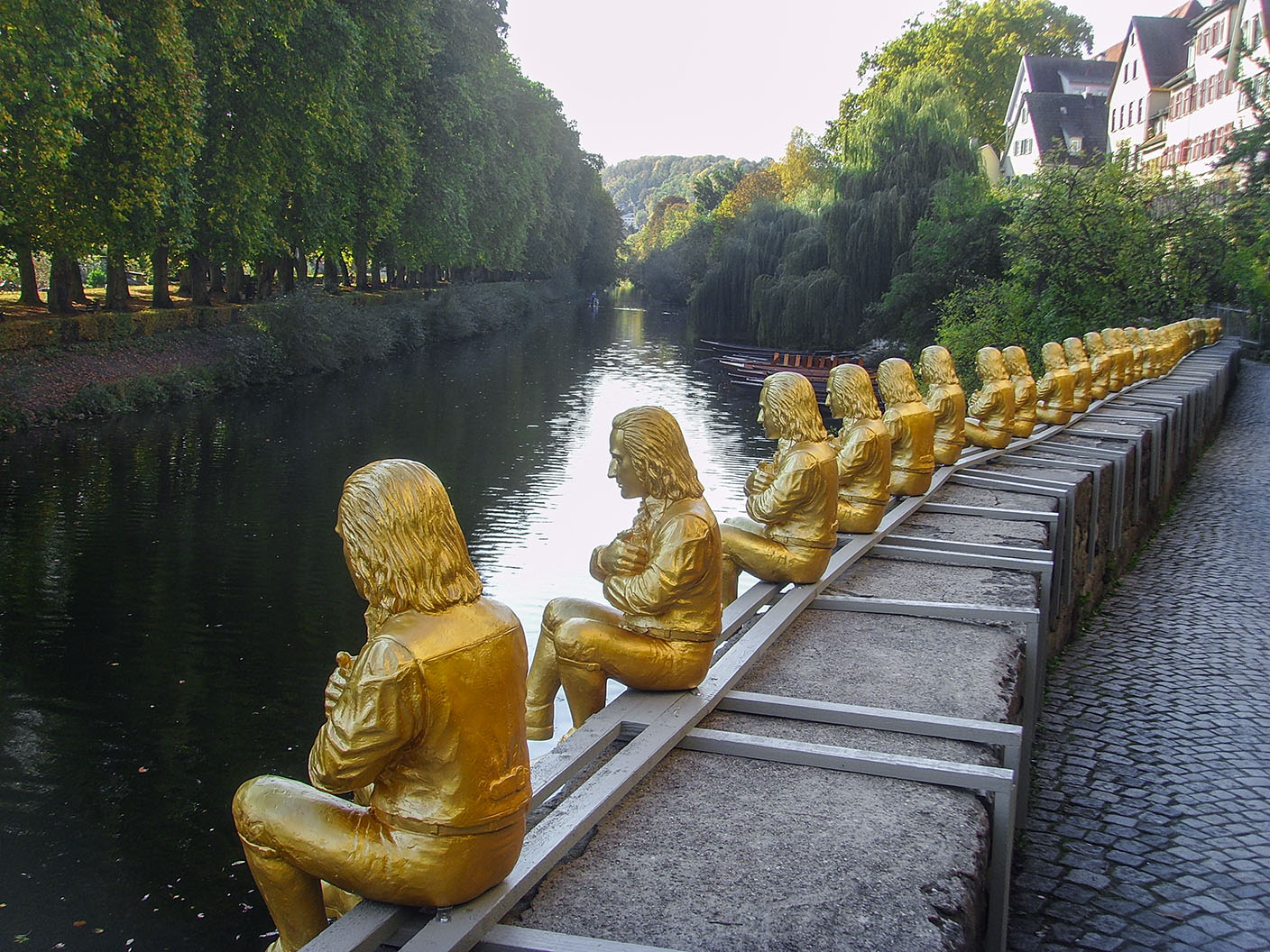
Photo: Herr Pelle, Wikiwand Commons, CC Lizenz.
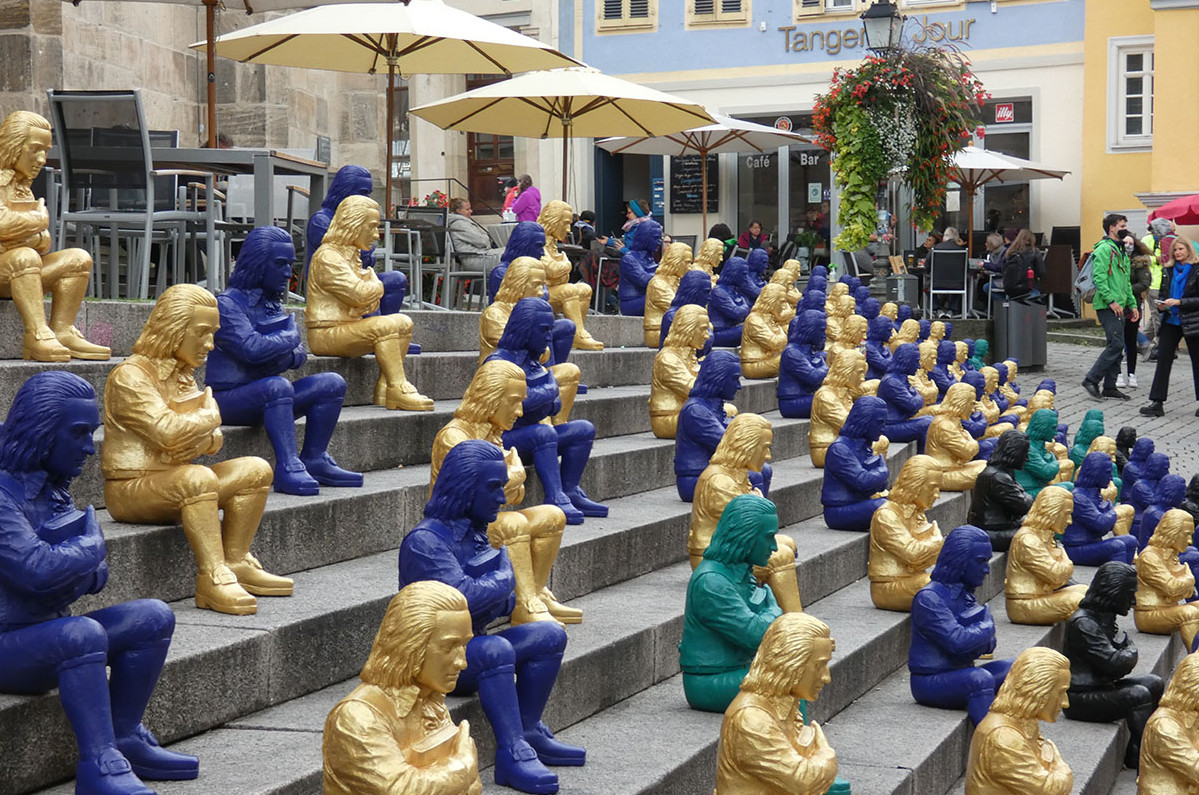
Photo: per Johannes-Gutenberg-Schule, Stuttgart
In 2017 the town of Lauffen erected an upbeat, polished bronze statue created by Prof. Waldemar Schröder. I can't imagine a more unlikely way of imagining the poet. In his left hand he seems to play an imaginary bass fiddle. Maybe the intention was to render him appealing to children and tourists.
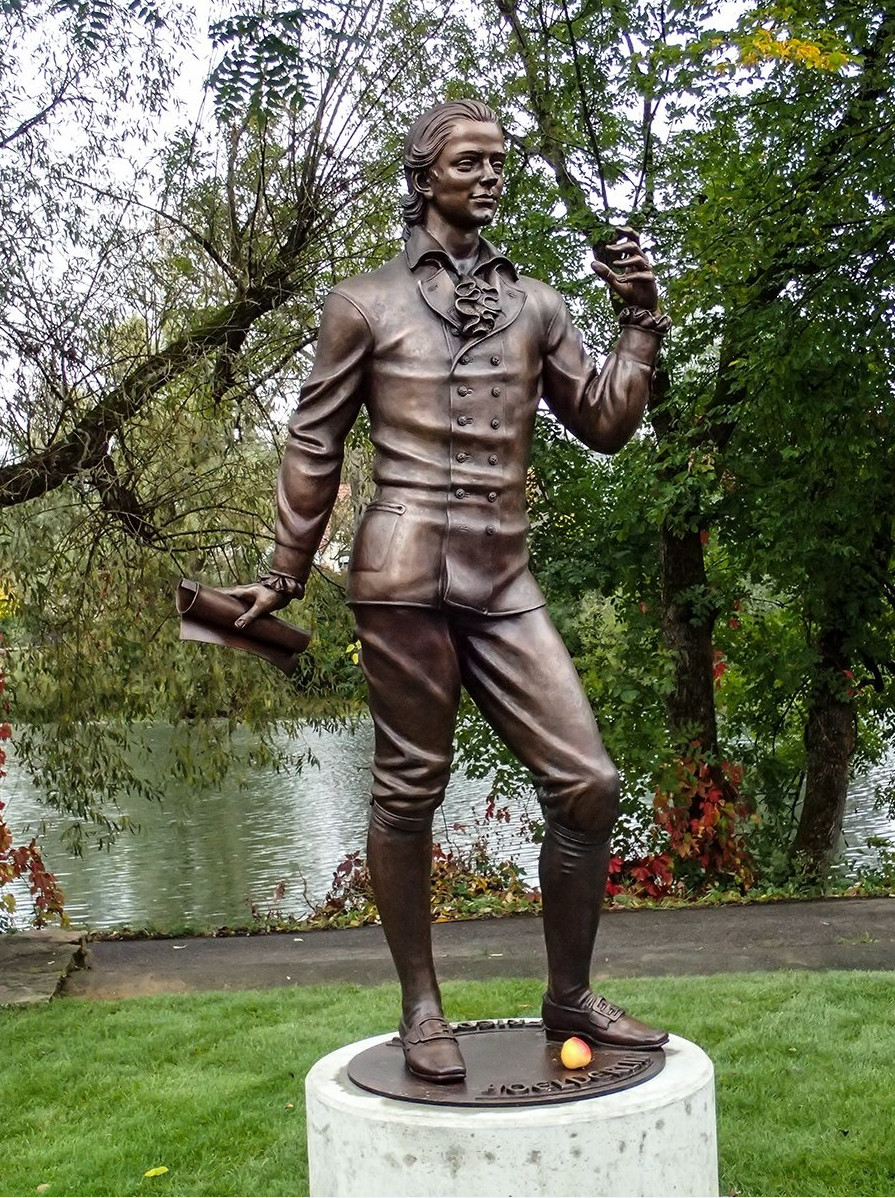
Photo: Kunstgießerei Strassacker, @Strassacker1919.
To be sure, I found none of these recent representations more disturbing that the poet's earlier manifestation in 2003 in the center of a traffic roundabout in Lauffen. While Friedrich Nietzsche orbits about him on a bicycle, the poet ponders the likelihood of his imminent castration at the point of an oversized writing implement.
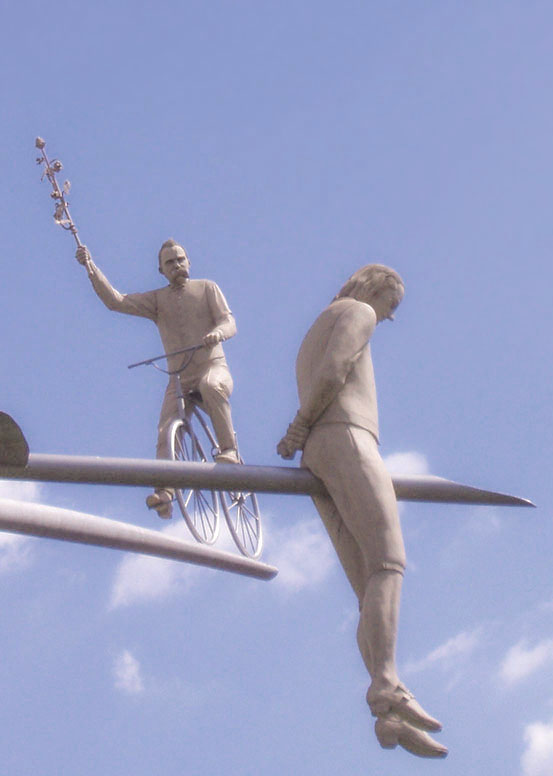
Photo: Peter Lenk, Hölderlin im Kreisverkehr, Wikiwand, public domain.
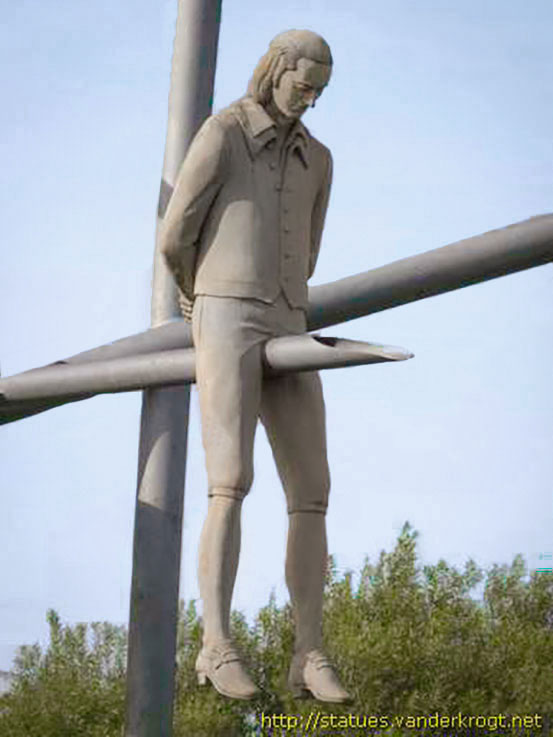
— 9/1/2022
Blog Page One
Blog Page Two
Blog Page Three
Blog Page Four Blog Page Five
Home Page
Website and Translations Copyright © 2022 by James Mitchell